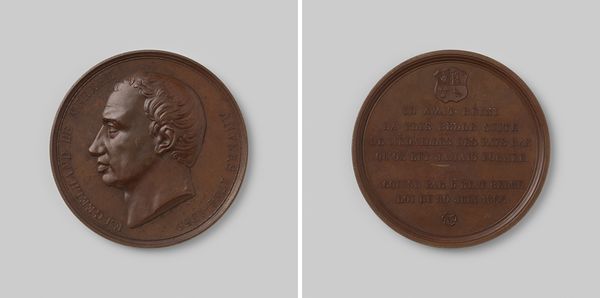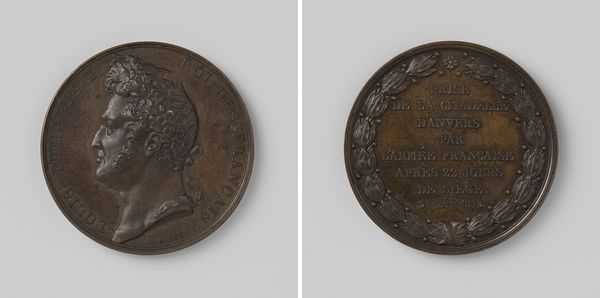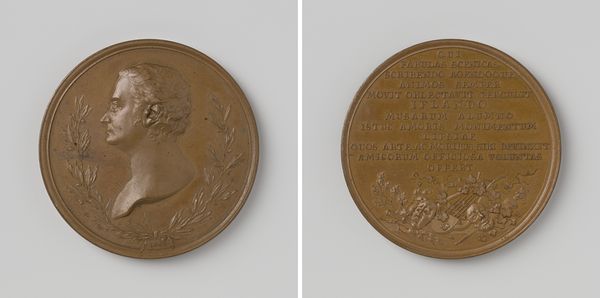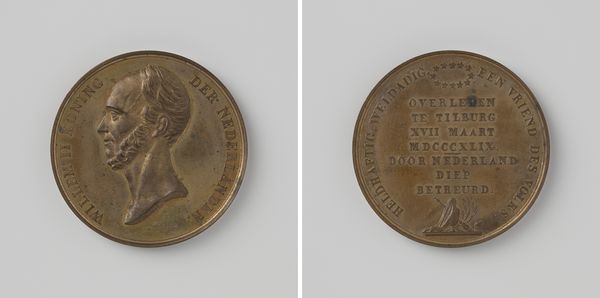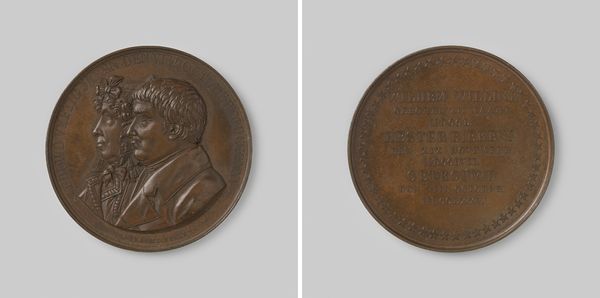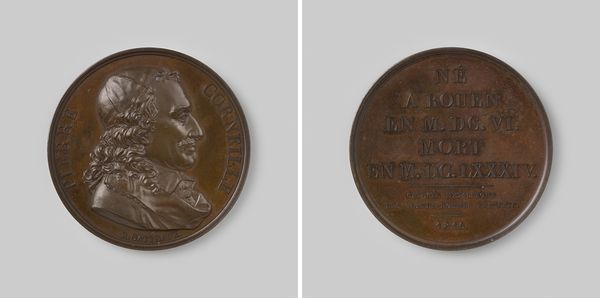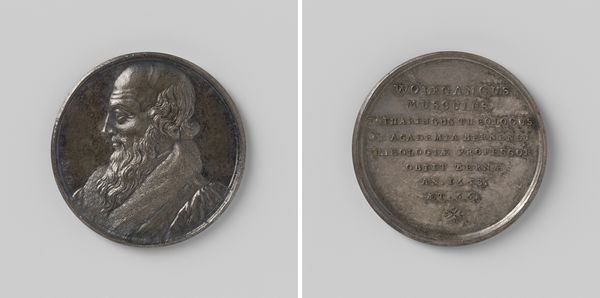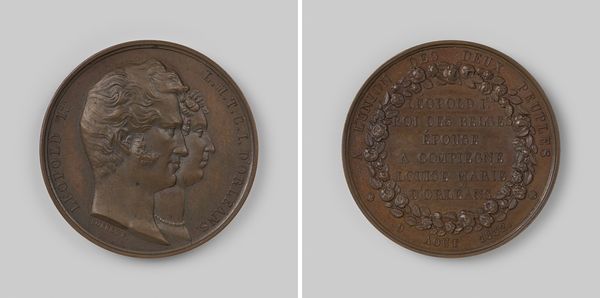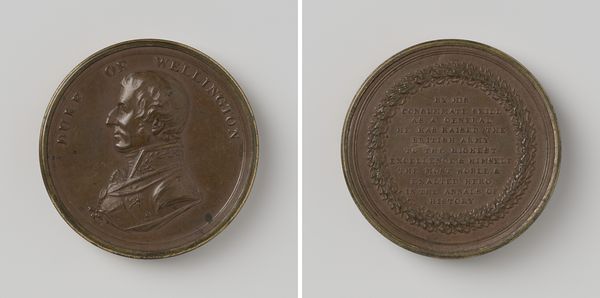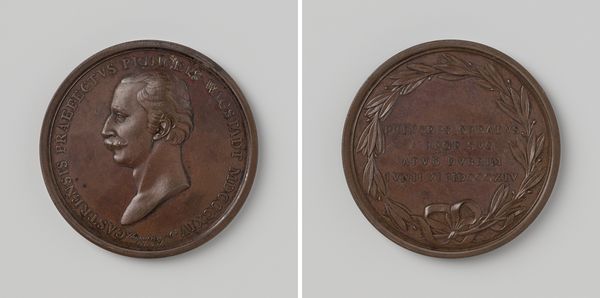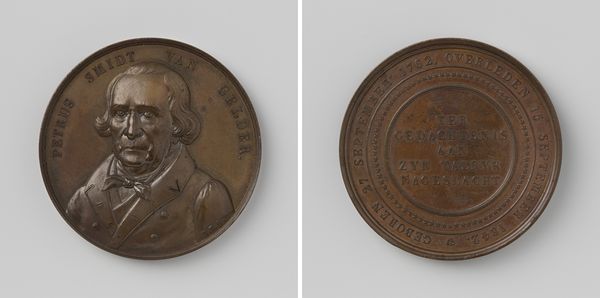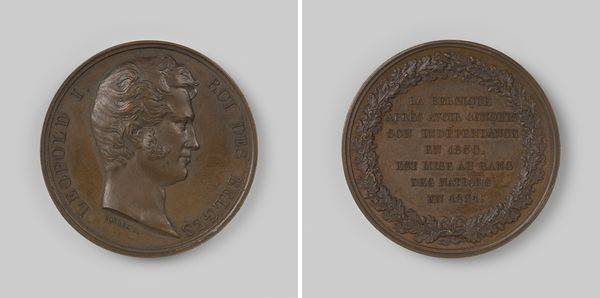
carving, relief, bronze, sculpture
#
portrait
#
carving
#
sculpture
#
relief
#
bronze
#
sculpture
#
carved
#
statue
Dimensions: diameter 4.1 cm, weight 38.11 gr
Copyright: Rijks Museum: Open Domain
Curator: Welcome. We are looking at "Overlijden van Herman Boerhaave," a bronze relief created by Amédée Pierre Durand between 1822 and 1825. Editor: Oh, this piece. It strikes me as quite...stately, even solemn. You get the feeling you ought to be wearing your Sunday best. The material has that time-worn feeling. Curator: Durand's selection of bronze as a medium enhances the formality; its cool tonality and subtle play of light reinforce a sense of dignified remembrance. It’s interesting to note the inscription and the portrait, their positions and size relationship across the whole. Editor: That’s the real trick isn't it? To create the tension through that perfect relationship of all elements? It feels like a miniature monument. It packs so much, a life into such a small circumference. A whisper of what once was, echoing from two centuries away. Curator: Precisely. Consider also, if you will, the relief’s technical execution; the detailed carving work lends depth, particularly noticeable in the face of Boerhaave. The text on the other side it appears, conveys both personal history and historical importance with its density and style. Editor: Absolutely. And to know it’s a depiction of death…makes me appreciate the careful craftsmanship. You feel that attention. I guess, at its heart, art that is “good” makes us all the more aware of being “alive” or rather the very condition of mortality? Curator: I would concur. It is through engagement with form and its meticulous detailing and internal balance of the form where meaning unfolds and reveals something deeper and intrinsic beyond superficial observations. Editor: Right. And that deeper reflection—the bridge between maker and viewer through time—makes me oddly feel that the Herman might enjoy some good wine at some point in his life; at least that makes me relate to his historical impact personally somehow. Curator: A somewhat whimsical though plausible reflection. It is one of the qualities which brings Durand’s technical construction of a tribute to the end of life into the context of modern understanding. Editor: Precisely. It turns this object from an artistic marvel into something deeply human. Thanks for shedding light on the intricate artistry involved. Curator: It has been my pleasure. Thank you for your refreshing observations.
Comments
No comments
Be the first to comment and join the conversation on the ultimate creative platform.
